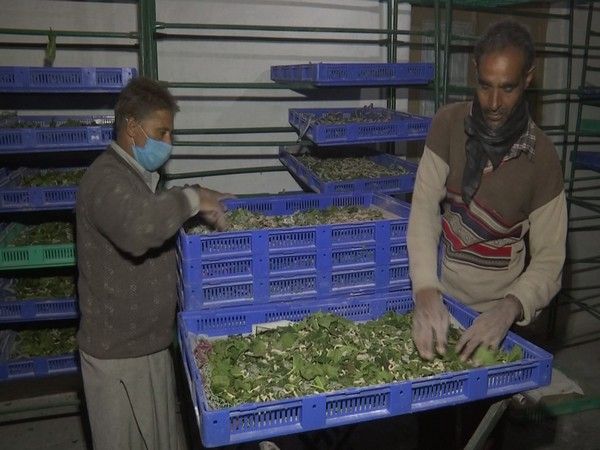Rearing process of cocoons in full swing to boost silk production in Kashmir

Advertisement
To generate employment for the local people of India’s union territory of Jammu and Kashmir, the local authorities are now focusing on increasing the production of mulberry fruit crops along with the production of cocoons which will give boost to the sericulture sector in the valley.
For successful production of cocoons, experts take good care of the silkworms throughout the process.
Inside the seed farms, experts maintain required temperatures and provide the silkworms with fresh mulberry leaves.
Next, the silkworms are put to rest for around 24 to 50 hours for the formation of cocoons. For good results, activities such as providing good quantity leaves, changing nets, and maintaining the required temperatures are taken care of.
Both the government and private sectors focus on the rearing process which is carried out in different seed farms including the Mirgund Silkworm Seed Station which is located 22 kilometres from the Srinagar city.
“We constantly maintain the room temperature here and provide quality leaves to the worms. We collect leaves, chop them and serve it to them as part of the process. We also burn charcoal when the temperatures decrease outside,” said Firdous Ahmed, feed instructor.
“Since it is late autumn, the rearing process is at its peak, so all labourers are busy with their duties. The process needs constant attention and team effort,” said Irshad Sofi, an employee.
Earlier, the rearing process used to take place using wooden racks but now with the help of centre government sponsored-schemes; the Jammu and Kashmir administration has replaced the wooden racks with plastic racks which are also suitable for the process.
“The government concentrates to increase the production of mulberry crops along with cocoons to give a boost to the silk production”, said Mohamad Abdullah, the manager of Silk Worm Seed Station.
Abdullah said, “We focus on Mulberry and cocoon production, and both the processes are equally important and go side by side. In sericulture, cocoon production adds value to mulberry production and without the latter, there is no value of mulberry production.”
“The government has always focused on mulberry production so that the farmers get leaves easily. If a farmer rears 60,000 silkworms which results in one quintal of cocoon from which the farmer earns Rs 30,000 to 40,000,” he added.
Advertisement






